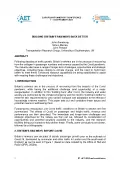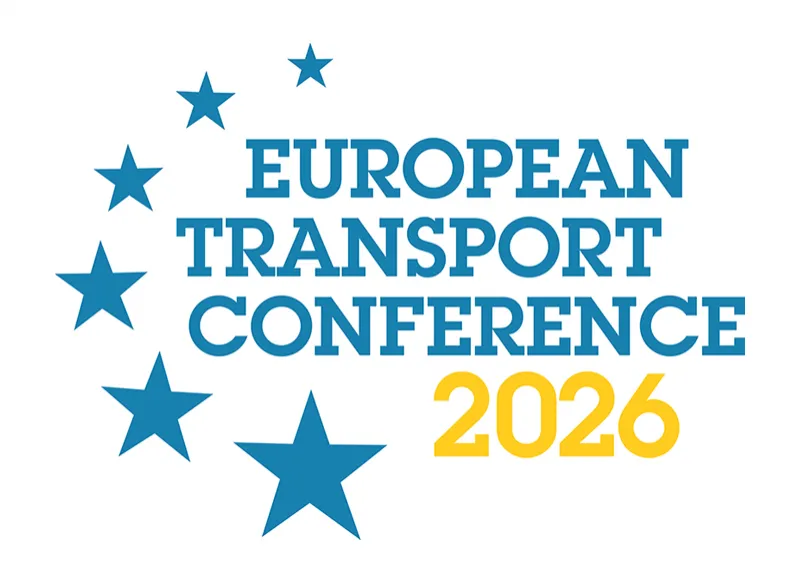-
Past ETC Papers

Browse, search and view papers from the past AET Conferences.
-
Members' Area

AET promotes networking and exchange of ideas, information and opportunities amongst members.
Conference Papers 2022
Milan, Italy
ETC Conference Papers 2022
Building Britain’s Railways Back Better: Restoring and Increasing Passenger Demand
Seminar
Day 3 (9 Sep 2022), Session 9, RECOVERY OF RAIL/STEERING FOR A NEW COURSE IN RAIL, 11:30 - 13:00
Status
Accepted, documents submitted
Submitted by / Abstract owner
John Armstrong
Authors
John Armstrong
Simon Blainey
John Preston
Short abstract
The Covid-caused collapse in passenger traffic is a challenge for Britain’s railways, but also an opportunity to build back a better railway for society’s wider benefit, requiring updated, improved methods and tools to forecast and stimulate demand.
Abstract
Prior to the Covid-19 pandemic, and following decades of traffic growth, Britain’s railways faced various challenges. These included system capacity limits and their effects on performance, system fragmentation and complexity, and high costs. There were some early indications of changes in travel trends, with the commuter market showing signs of plateauing. Rail’s continuing strengths lay in its ability to move large volumes of passengers and freight at high speeds, with limited environmental impact.
Data from the Office of Rail and Road (ORR) shows that passenger demand collapsed in 2020-21 Quarter 1, following the first Covid lockdown, with freight volumes also declining. While freight has since recovered, passenger numbers remain depressed, at approximately 50% of pre-Covid levels, with only leisure traffic having fully recovered. High fixed costs, together with additional costs imposed by Covid, and loss of revenue, put a severe strain on the railway’s finances, necessitating major government financial support. Pressure to maximise residual fare revenue has limited the scope to ‘price users back’ onto the railway with reduced fares, unlike measures taken in Belgium, France and Germany, for example.
The effects of the Omicron Covid variant and the subsequent lifting of ‘Plan B’ restrictions are not yet reflected in ORR’s rail usage data. Given reported reluctance to return to traditional, ‘full-time commuting’, and the widespread uptake of online conferencing applications, it seems unlikely that rail’s commuter and business travel markets will recover to pre-Covid levels soon, if ever. While reducing the capacity pressures on peak period train services (and facilitating social distancing), this loss of the most lucrative traffic sectors puts continuing pressure on the railway’s finances.
For its own financial sustainability, it is vital that the railway should re-build its traffic and revenue base, while also reducing avoidable costs and increasing efficiency. To address broader and longer-term concerns and challenges, and enable wider social and environmental sustainability, the railway should aspire to provide the backbone of an integrated, affordable, high-capacity and high-quality, user- and environment-friendly national public transport system, consistent with the objectives of the Williams-Shapps Plan for Rail and the Great British Railways Transition Team’s Whole Industry Strategic Plan.
While the passenger traffic and revenue shortfalls present the railway with financial challenges, the current spare capacity in the system provides a degree of ‘breathing space’ for the industry and a genuine opportunity to ‘build back better’ by providing passenger and freight services that more closely meet the evolving needs both of individual passenger and freight users, and of wider society. This opportunity is potentially enhanced by the transition towards a single coordinating body and ‘guiding mind’ for the industry in the form of Great British Railways. Spare capacity across the national system is being augmented by the opening of Crossrail, and, later, by High Speed 2, enormous investments which can only be justified (and recouped) by restored patronage growth and/or shift from competing transport modes.
The current approach to passenger demand forecasting uses elasticities based upon historic, probably now-obsolete, relationships. This paper sets out how these fundamental relationships should be recalibrated to reflect the post-Covid travel environment, identifies the ‘levers’ (especially fares and ticketing policy) available to increase demand, and considers the travel sectors that may most easily and beneficially be (re-)attracted to rail. It describes how the revised relationships should be applied in new, activity-based and/or ‘system of systems’ modelling approaches. It considers how a broader understanding may be obtained of travel and transport demand in general in the with-/post-Covid world, and how the capacity released by reduced passenger demand should best be allocated to freight traffic, to maximise socio-economic and environmental benefits.
Increased reliance by the railway on discretionary and/or leisure travel means that passenger comfort and convenience are likely to be increasingly important drivers of demand. The paper considers how human factors approaches may be used to obtain an improved understanding of how best to encourage ‘hard to reach’ sectors of the market to choose rail over private car transport. It also examines the potential influence of road user charging (in association with the uptake of electric vehicles) on modal shift, of which a relatively small degree from road (and air) could transform the railway’s utilisation, finances and prospects, and improve local and global environmental conditions.
Data from ORR and other sources is informing the assessment of changes in rail transport patterns and the updating of demand forecasting and stimulation processes to restore and increase demand, and further encourage modal shift to rail.
Programme committee
Rail Policy and Planning
Topic
Behaviour Change – the impacts of the climate emergency and COVID-19 on long term travel patterns
Documents:

Association For
European Transport
Forester House
Doctors Lane
Henley-in-Arden
Warwickshire, UK
B95 5AW
+44 (0) 15 64 793552
VAT number: 710 1866 64
Conference Supporters & Endorsers




Legal Entity
The Association for European Transport is registered as an Association ('vereniging') with the Chamber of Commerce for Haaglanden in The Netherlands under company number 27170096.
Built on Zenario




